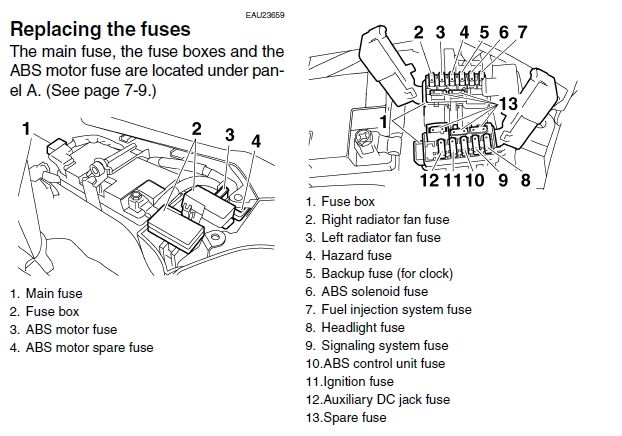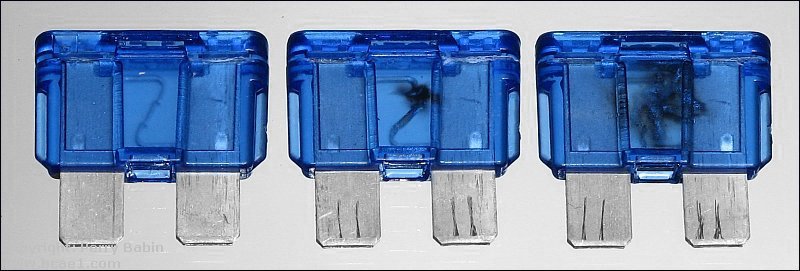I was out riding today and I noticed the turn signal indicators on my 2006 Gen II were very hard to see in the bright Sun light with Sun glasses on. I'm thinking I need to add some LED turn signal indicators to make them more visible. But when I take the sun glasses off I still can't see the indicators. What the F . . . !

So I put on my Hazards and take a walk around my motor. Nothing . . . no signals, no front running lights, no tail light. Thankfully I've still got brake lights and headlights. A check of my owners manual doesn't even show a fuse for the tail light or running lights. I check the Signaling System fuse and that appears to be good. Does the Signaling System even have anything to do with the Turn Signals? I check one of the Turn Signal bulbs and it looks good.
If this was my old Concours I'd say I have a bad junction box. Although a bad junction box would also have eliminated the headlights. Try riding from Vermont to New Jersey after dark with no lights of any kind. But that is another story.
I find the lack of fuses for the different light circuits very strange. Usually electrical problems are the one thing I'm good at solving but in this case I'm stumped on where to start troubleshooting.
Has anyone experienced or heard of anything like this before?
So I put on my Hazards and take a walk around my motor. Nothing . . . no signals, no front running lights, no tail light. Thankfully I've still got brake lights and headlights. A check of my owners manual doesn't even show a fuse for the tail light or running lights. I check the Signaling System fuse and that appears to be good. Does the Signaling System even have anything to do with the Turn Signals? I check one of the Turn Signal bulbs and it looks good.
If this was my old Concours I'd say I have a bad junction box. Although a bad junction box would also have eliminated the headlights. Try riding from Vermont to New Jersey after dark with no lights of any kind. But that is another story.
I find the lack of fuses for the different light circuits very strange. Usually electrical problems are the one thing I'm good at solving but in this case I'm stumped on where to start troubleshooting.
Has anyone experienced or heard of anything like this before?
































































